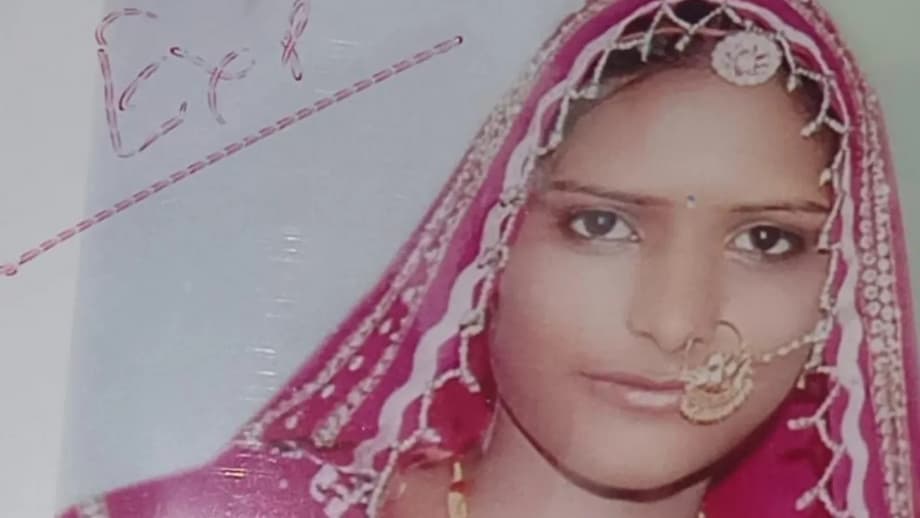A startling verdict in Udaipur
An Indian district court in Udaipur, Rajasthan, has sentenced a man to death for burning his wife alive after repeatedly humiliating her over her dark skin. The case has forced a reckoning with colourism, the bias that favors lighter skin tones, and with the brutal reality of domestic violence. Judge Rahul Choudhary described the killing as a crime against humanity and said it met the rarest of rare threshold for capital punishment. The order now goes to the Rajasthan High Court for confirmation, while the convicted man has the right to appeal.
The victim, identified as Lakshmi (also spelled Laxmi in some court documents), married in 2016. Before her death, she told authorities that her husband, known as Kishandas and also referred to as Kishanlal, had mocked her complexion since the wedding, often using a slur that means dark skinned. In statements recorded by police, doctors, and an executive magistrate, she said he arrived home on the night of 24 June 2017 with a bottle of brown liquid he claimed would make her skin fairer. He applied it on her, she complained about a strong acid like smell, and he then ignited her with an incense stick and poured more of the liquid as the flames spread. Family members from his household took her to a hospital, where she died from her injuries.
The prosecution, led by Dinesh Paliwal, called the ruling historic and said the evidence showed a pattern of taunting and cruelty that culminated in an extreme act of violence. The court accepted multiple statements from Lakshmi as reliable dying declarations. The judge sent the sentence to the High Court for mandatory review, and the defense team has 30 days to appeal. Defense lawyer Surendra Kumar Menariya insists the death was accidental and says his client was falsely charged.
Introducing the order in court, District Judge Rahul Choudhary used language that reflected the shock at the brutality described in the record. He said the cruelty and betrayal of trust demanded the strongest sanction available under Indian law.
The court finds that this heart rending brutal crime was not just against Lakshmi, but a crime against humanity. It shocks the conscience of a healthy and civilised society.
Public prosecutor Dinesh Paliwal said the verdict carries a message about accountability for extreme violence against women. He underlined the youth of the victim and the loss to her family and community.
A young woman in her early twenties was murdered in a brutal way. If we do not save our daughters, then who would?
Defense counsel Surendra Kumar Menariya told reporters that he would file an appeal and maintained that the trial court erred.
The death was accidental and my client was falsely charged.
How the attack unfolded
Court documents and the judgment outline the trajectory that ended in the 2017 killing. Lakshmi and Kishandas married in 2016. She reported that after the wedding he mocked her looks, used derogatory names tied to her skin tone, and pressured her about lightening her complexion. On 24 June 2017, he returned home with a plastic bottle filled with a brown liquid. He told her it would improve her complexion and applied the substance to her body. When she protested that it smelled like acid, he lit an incense stick and set her on fire, then poured more of the liquid as she burned. He fled. Relatives from his household rushed her to a hospital, but she later died.
The recorded statements given before death, known in India as dying declarations, were taken by police officers, treating doctors, and an executive magistrate. The sequence of these statements and their internal consistency were cited in the judgment. In Indian law, such declarations are admissible as evidence because the declarant cannot testify at trial. Courts often evaluate whether the dying declaration is voluntary and coherent, whether it was properly recorded, and whether other evidence aligns with it. In this case, the judge said the declarations were credible and consistent with the medical evidence.
Inside the courtroom
The Additional District and Sessions Court in Udaipur heard testimony and reviewed documents gathered over an eight year period. The prosecution said it presented 14 witnesses and 36 documents to support the charges against the accused. Prosecutors argued that the accused had harassed the victim for her complexion, staged a fake remedy under the pretext of fairness, and used a corrosive substance and fire to kill her. The defense denied intent to kill and said the incident was accidental. The court rejected that claim.
In India, the death penalty is reserved for the rarest of rare cases, a standard shaped by Supreme Court rulings going back to the 1980s. Judges must weigh aggravating circumstances against mitigating factors and consider whether a life sentence would be inadequate. The Udaipur court concluded that the cruelty shown during the attack, the betrayal of the trust within a marriage, and the motive tied to prejudice about skin tone made the crime extraordinary in its brutality.
When a trial court imposes a death sentence in India, the law requires confirmation by the jurisdictional High Court. The convict can challenge the judgment in the High Court and then in the Supreme Court. Even after judicial review, a convict can seek mercy from the state governor and from the President of India. Many capital sentences are modified on appeal or commuted during later review, which means the coming months will be decisive for the fate of this sentence.
Colourism in India
The case has renewed attention on colourism, a form of bias that favors lighter complexions and marginalizes darker skin within the same ethnic group. In India, this bias shows up in everyday language, popular culture, marriage markets, and advertising. Matrimonial listings often highlight a bride’s complexion. Film and television have long cast lighter skinned women in lead roles and stereotyped darker complexions. Skin lightening creams remain a major market segment across South Asia. Campaigners have pushed back for years, and some brands have changed product names and messaging to avoid direct claims that lighter skin equals success. The bias persists, both openly and in subtle ways.
Scholars trace this preference to a mix of colonial history, caste linked status, and class advantage. Histories of British rule reinforced the social privilege linked to white or light skin, while older hierarchies in South Asia often associated lighter complexions with higher status groups. The result is a layered legacy that still shapes beauty ideals, self worth, and social sorting. Critics point to a global market for lightening products worth many billions of dollars, aggressive marketing that plays on insecurity, and risks to health from unregulated formulations.
Colourism also has a psychological cost. People report bullying, exclusion, and pressure to change their appearance. In July 2025, the death by suicide of San Rechal Gandhi, a model and former Miss Puducherry who publicly challenged skin tone bias, drew national attention to the toll that discrimination can take. She had celebrated dark beauty in her work and spoke about harassment tied to complexion. Her story became part of a larger conversation about how entrenched biases combine with economic stress and online abuse to erode mental health.
What research says
Academic studies on colourism in India are growing, with results that vary by context. One experimental study with business school participants in Bangalore tested whether skin tone influenced hiring decisions when resumes were identical. The researchers found no statistically significant preference for lighter skin in those evaluations, a result that challenges a common belief that darker skin always reduces employment chances in elite settings. The authors note that class and caste may outweigh skin tone in some environments, and that colourism might work more strongly in marriage markets, media representation, or everyday social interactions. The study is available through a public research archive at the National Institutes of Health website and provides useful nuance for readers interested in the evidence base. Readers can review the study at this link.
Violence against women and the law
Advocates for women’s safety say cases like Lakshmi’s sit at the intersection of gender based violence and social prejudice. Surveys in India have consistently found substantial levels of intimate partner violence. Indian law provides several tools to prosecute abuse and serious assault, including provisions that address acid attacks, grievous injury, and murder. Enforcement remains uneven, and survivors can face pressure to withdraw complaints. Public outrage often leads to calls for harsher punishment. Courts, however, still apply strict criteria for capital sentences.
In this case, the judge’s language about a crime against humanity expressed moral condemnation of the brutality. That phrase has a specific meaning in international criminal law, but Indian trial courts sometimes use it to underscore the collective shock and the sense that the act offends basic values. The Udaipur court linked its sentence to the rarest of rare standard and said the case required a severe response to deter similar acts and to acknowledge the cruelty described by the victim in her final statements.
Why dying declarations matter in Indian trials
A dying declaration is a statement made by a person who believes death is imminent, and in Indian evidence law it can be admitted at trial even though it is hearsay. Judges look for signs that the statement was voluntary, coherent, and recorded properly by a competent authority. The existence of multiple declarations by Lakshmi, taken by police, medical staff, and a magistrate, increased the weight the court gave to her account. The court also looked at consistency between those statements and medical findings.
Reactions and debate
The verdict sparked a national conversation about whether harsh sentences deter violence and about the daily ways colourism shapes relationships. Supporters of the judgment argue that it respects the victim’s testimony and sends a strong message that cruelty tied to prejudice will face severe consequences. They also argue that consistent prosecution is as important as the length of the sentence. Critics of capital punishment caution that death sentences are irreversible and say the legal system must guard against error. They say the focus should include prevention, survivor support, and public education that challenges harmful beauty norms.
Rights groups point to long running campaigns that ask media and brands to stop promoting fairness as a sign of success or virtue. The Advertising Standards Council of India has rules that prohibit ads from portraying dark skin as inferior. Some multinational companies have revised product names and claims. Activists say change inside homes and communities matters most, since family pressure and everyday bias can push people toward risky products or abusive relationships. Education, counseling, and early intervention by local authorities can reduce harm when relatives notice taunting or threats rooted in looks or complexion.
What happens next in the case
The trial court’s death sentence will undergo automatic review at the Rajasthan High Court. The defense can file a detailed appeal that challenges the conviction and the sentence. If the High Court confirms the sentence, the defense can seek relief from the Supreme Court of India through an appeal and, later, through review and curative petitions. Regardless of the outcome of judicial review, a convict may file mercy petitions with the state governor and the President of India. Death sentences often take years to reach a final outcome because of these procedural safeguards.
Courts sometimes commute death sentences to life imprisonment if they find mitigating factors, procedural flaws, or a risk of inconsistent application. The defense has already said it will appeal, arguing that the death was accidental and that evidence was insufficient. Prosecutors say the case rises to the rarest of rare category because of the cruelty and the motive tied to prejudice about skin tone. The High Court will test those claims against the record.
How attitudes are changing
Public campaigns against colourism are more visible today than a decade ago. Celebrities and influencers speak openly about skin tone bias. Non profits work with schools and colleges to address bullying and to promote healthy self image. Some companies have changed marketing and avoided claims that feed insecurity about complexion. Audiences are more vocal, which has pushed film and television producers to diversify casting and shrink the parts of scripts built around skin tone jokes or slurs. Matrimonial advertisements have slowly begun to drop rigid complexion demands, although many still use coded language.
Progress remains uneven. Social media can amplify abuse just as it can spread positive messages. Families often carry inherited assumptions about what counts as beauty. Police and courts can set an example by taking threats and taunts seriously before abuse escalates. Teachers, local officials, and health workers who encounter signs of intimidation or degrading language about looks can refer families to counseling or legal help. These steps shape a long term correction in social attitudes, which in turn reduces the risk that prejudice about appearance becomes a pretext for cruelty.
The Bottom Line
- An Udaipur court sentenced a husband, identified as Kishandas, to death for burning his wife, Lakshmi, after taunting her over her dark skin.
- The judge called the murder a crime against humanity and said it met the rarest of rare standard for capital punishment.
- According to her dying declarations, he applied a corrosive liquid he claimed would lighten her skin, set her on fire with an incense stick, and poured more liquid as she burned.
- The prosecution cited 14 witnesses and 36 documents; the defense says the death was accidental and plans to appeal.
- The sentence requires confirmation by the Rajasthan High Court and can be challenged up to the Supreme Court, with the option of mercy petitions.
- The case has renewed debate about colourism in India, where lighter skin is often favored in media, advertising, and marriage markets.
- Campaigners say education, survivor support, and responsible media are essential to reduce harm linked to skin tone bias.




